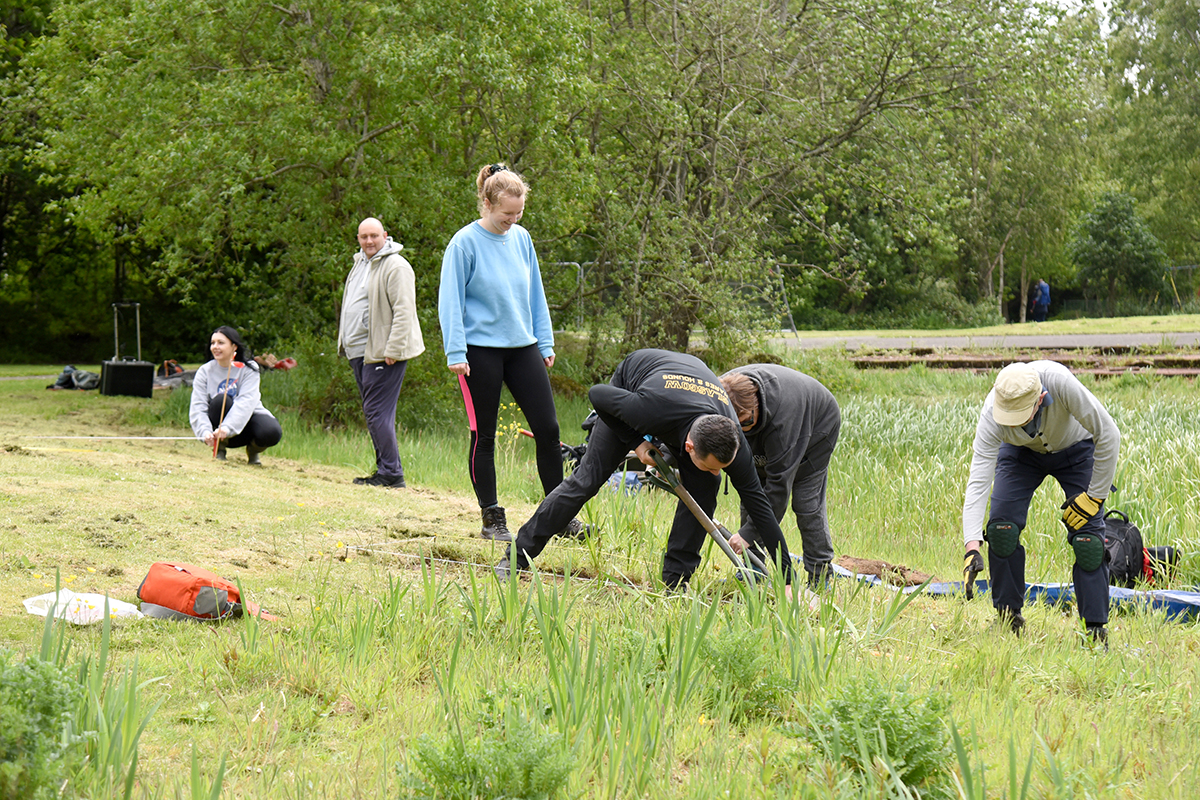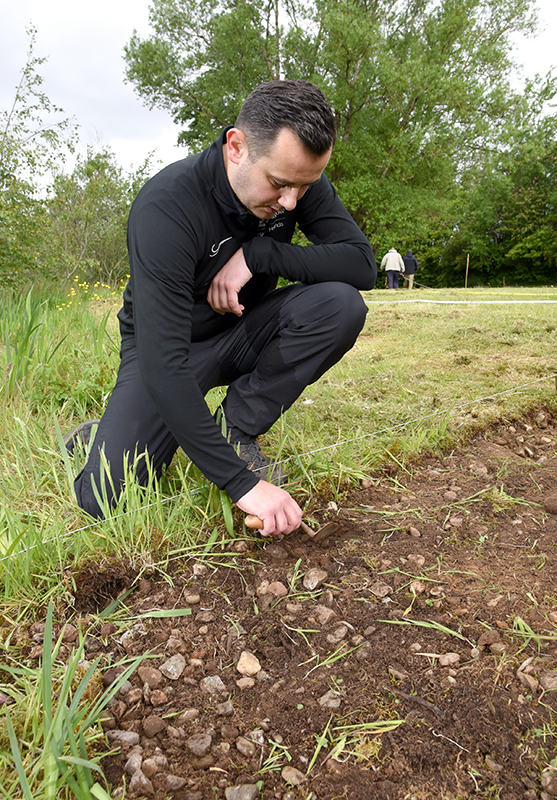
A senior lecturer in archaeology at the University of Glasgow has revealed that construction work around the site of where the historic Glasgow Garden Festival once stood is seeing the site ‘gradually become what it should have been’.
Held from April to September 1988, the Garden Festival attracted more than four million visitors, covered over 120 acres of land on the south bank of the River Clyde, and was expected to lead to a complete regeneration of the Clydeside area that had been largely left derelict following the demise of the shipbuilding industry.

The Bell’s Bridge was built to accommodate the festival, and the area of the city is now home to the Glasgow Science Centre, while the Scottish HQ of the BBC and STV are nearby. However, some areas remained untouched by developers – including a site at Pacific Quay, which only this year has had plans submitted for the £10 million build of homes and retail units.
Dr Kenny Brophy, of the University of Glasgow, is leading a team of archaeologists from the learning institute in excavating Festival Park in the hope of finding the remains of the festival. Dr Brophy is working alongside heritage expert Gordon Barr and designer Lex Lamb as part of the After the Garden Festival project.

The academic, who specialises in British Neolithic and the early Bronze Age, said there have been questions about why they are digging to find the remains of an event that was ‘only’ held 34 years ago. However, he explained that carrying out the work now means that they can obtain key information from people involved in the festival – such as the site’s architect who has provided key accounts of the layout. Furthermore, he said it revokes important discussions held around the time with regards to the development of Glasgow.
“It’s been a difficult few years for everyone (due to Covid), but Glasgow is bouncing back,” Dr Brophy told Project Scotland. “I think the project has come at a good time, and I think to remember a time when we all came together and enjoyed ourselves and there seemed to be a moment of rebirth for the city.
“Behind us just now there’s a construction site; these flats have been built quite recently so there’s a new community moving in here and there’s a new hotel and gym – so it’s gradually becoming what it should’ve been after the festival finished.”

Naturally, given the size of the Garden Festival, construction firms were heavily involved – with the event’s official brochure crammed with construction firm adverts. Laing Homes let the land to the festival’s organisers, whilst press at the time reported the ‘great attention’ Wimpey received at their show home which was on display at the event, with the likes of RJ McLeod and Balfour Beatty also involved in the setup – which included the 120 feet high Coca Cola rollercoaster, which was later sold to a theme park in Derbyshire.
Now in 2022, the team from the University of Glasgow is excavating parts of Festival Park, in the Govan area of the city, in a bid to find any remains of it. The area being focused on is where a pond, waterfall, and train track featured.
Dr Brophy revealed they had already found some coins in the area where the pond was situated, but were unable to identify them due to them being too green due to the amount of time they spent submerged.
“Those kinds of tangible connections are what we’re looking for; objects that might have been dropped or thrown into the water, because that’s the only place we’re going to find anything as everything on the surface would’ve been cleared away,” he added.

Dr Brophy said it is ‘difficult to tell’ if remains could be found outside of Festival Park itself, but said an area out by the docks on the Clyde could hold some remnants – with it being flat and grassy. He said the team may do geophysics in the area, as well as elements along the railway line which ran through the festival – with the project looking to locate the route.
“One of the things we need to do is look at the bigger area and see if there’s anything else that survives, because there are other greenspaces and gaps (where) we might be able to find bits of the festival that are still there. There’s probably going to be broader field work to look at the whole Glasgow Garden Festival and what’s left, and we might come back and do a bit more excavation in the future.”
Another key part of the project is locating the current location of instalments that featured at the festival. The work has found that elements originally housed on Glasgow’s Clydeside have found their way as far afield as Japan, including one of the trains which is now in Hokkaido.
Dr Brophy explained that by combining discoveries of festival remains beneath the ground and what happened to the attractions, they can form an understanding of a ‘different dimension’ to the festival with regards to how big an infrastructure project it was both in terms of its setup and dismantlement. It is hoped that it can spark conversations on the uses of areas of land in the city.
“I think it’s important for us to think about what we want out of developments; do we want Glasgow to just be full of retail parks, flats, and glassy buildings, or do we want greenspaces and parks to allow amenities?
“There’s lots of local people who have come into this park and said: ‘Hopefully nothing happens to it, because this is the only greenspace we’ve got’ – so I think there has to be a balance going forward. I think preserving the Glasgow Garden Festival stuff here will hopefully mean this park will be preserved in the long term.”











